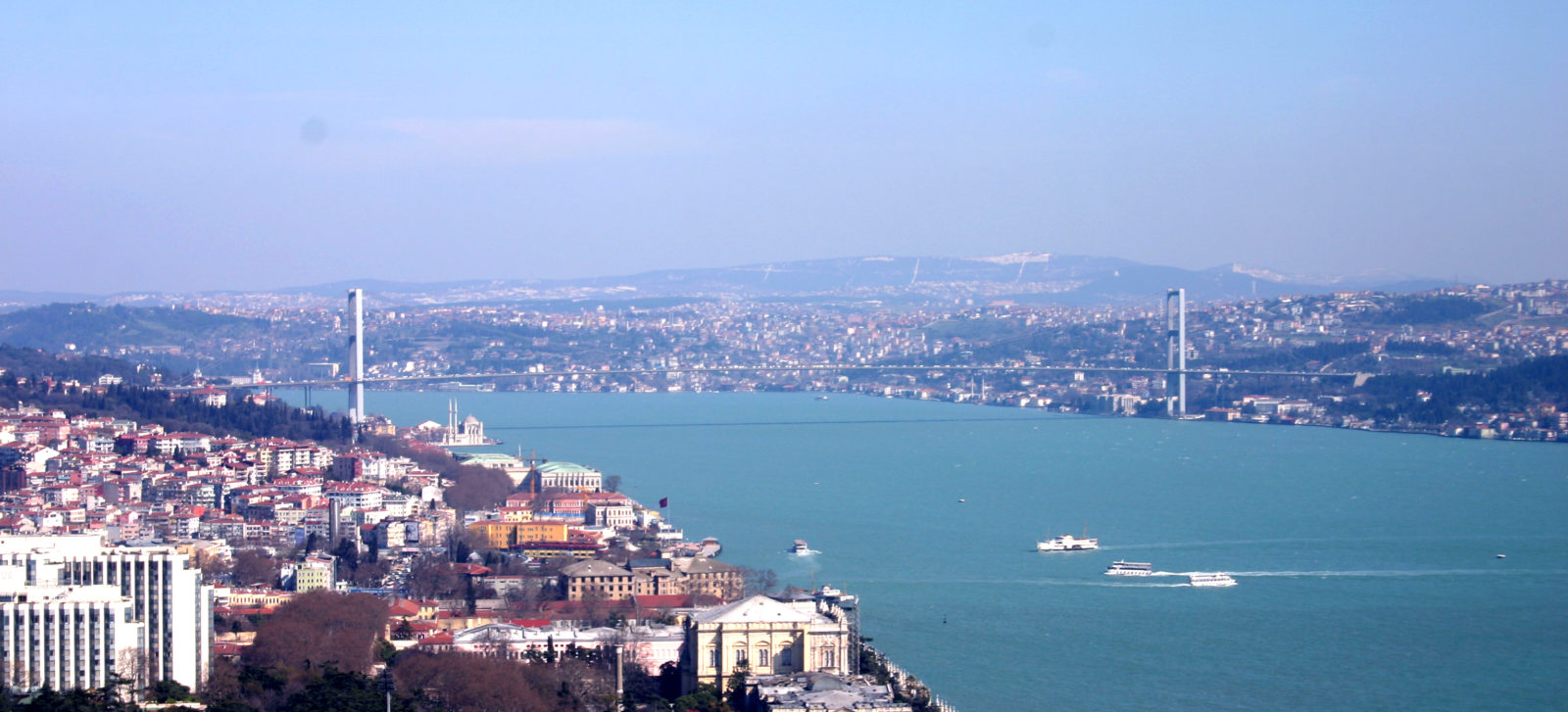USHS Blog
Between the Devil and the Deep Black Sea
In his address to the Russian political leadership on 18 March 2014, President Vladimir Putin began by insisting on how important Crimea is for Russia’s national history and pride. It was there that Prince Vladimir the Great, the founder of medieval Russia, was baptised. ‘Crimea’, Putin continued, ‘is also Sevastopol – a legendary city with an outstanding history, a fortress that serves as the birthplace of Russia’s Black Sea Fleet. Crimea is Balaklava and Kerch, Malakhov Kurgan and Sapun Ridge. Each one of these places is dear to our hearts, symbolising Russian military glory and outstanding valour’.
The President went on to address the disastrous dissolution of 1991, when Russia was ‘incapable of protecting its interests’ and handed over national territories and citizens ‘like a sack of potatoes’. However, by annexing the peninsula, President Putin did not only intend to resolve a ‘historical injustice’ that had hurt Russian ‘hearts and minds’; he also used it to redirect his people’s nostalgia for imperial and Soviet grandeur and make it fit a new foreign policy. According to the available state-controlled data, most Russians seem to have endorsed the ‘return of the Crimea to the Russian homeland’.
The annexation of the Crimea was followed by a rapid military and naval build-up by all major interested actors, making the Black Sea a hot spot of the new cold war between Russia and the West. For now, the battle has remained rhetorical. References to contesting historical memories and legacies abound, making this strife also an interesting example of the role history and national historical narratives play in modern international politics and propaganda discourse.
Naval muscles emaciated and flexed in the Black Sea
Notwithstanding its sentimental value, the annexation of the Crimea was not just meant to strengthen the nationalist sentiments of the average Russian citizen. At the separation of 1991, Ukraine inherited the best naval sites in the Black Sea, including the strategic ports of Odessa, Mykolaiv, Kherson and Sevastopol. Besides the Sea of Azov’s littoral, Russia only mastered about 400 km of Black Sea coastline on its eastern shore and one strategic naval base (Novorossiysk). Moscow’s de facto protectorate over separatist Abkhazia added another 200 km to its possessions.
Still, Crimea was definitely the great prize with its strongholds and central position in the Black Sea, allowing for quick access to Ukraine, Romania, Georgia or Turkey. Russia was already increasing its military and naval capacities in the area, and Crimea belongs to its “southern strategic bastion”, together with military assets located in regions such as Armenia, Abkhazia or South Ossetia. Just like in the eighteenth and nineteenth centuries, Russia’s neighbours fear that Crimea is not a purpose in itself, but also a means for trying to solve ‘historical injustices’ in other nearby places.
NATO’s Balkan responses
Romania, a NATO member since 2004, has watched Russia’s military actions in Georgia in 2008 and in Ukraine in 2014 with great concern. Again, historical memories play a key role in this. The hegemonic tendencies of imperial Russia and the communist regime have worked to make Romanians extremely suspicious of Russia’s real intentions. According to a 2015 poll, 9 in 10 Romanians did not trust Russia, and two thirds of the respondents believe that a military conflict against Russia is imminent or possible.
With such alarmed public opinion, the Romanian authorities have intensified the efforts to increase NATO’s military and naval presence in the country. A NATO airbase near Constanţa in Dobrogea was modernized in the past decade, and a state-of-the-art missile defence system at Deveselu has become operational in May 2016.
Yet, the Romanian government wants NATO to be even more active in the area. In January 2016 the government in Bucharest proposed to create a permanent NATO naval task force in the Black Sea. The task force should rely on the naval assets of NATO Black Sea member states (Bulgaria, Romania and Turkey) and would also serve to extend cooperation between Ukraine and Georgia as both are eagerly looking for a closer cooperation with the West. Nevertheless, the naval participation of non-riparian countries, such of the United States, Germany or Italy, could be the most noteworthy development because of the potential legal consequences for the regime of the Straits, the gateway to the Black Sea.
Historical comments on transiting the Turkish Straits
In the nineteenth century conflicting visions on commercial and naval access through the Turkish Straits stood at the core of the Eastern Question, when Russia forced the passage for its commercial and military fleet, and the Western powers tried to preserve a difficult balance. After a long and twisted diplomatic history, the Montreux Convention (1936) allowed Turkey to remilitarize the Straits as long as it would permit the passage of warships from riparian states. The warships of other navies could only enter the Black Sea with prior notification and for a maximum of 21 days. Turkey is still fully committed to respect this convention, which is a symbol of the country’s sovereignty. However, in the past years this agreement has proven to be as costly for NATO as it has been advantageous for Russia.
Turkish developments and conclusions
Turkey is thus the key country in this complicated equation, especially because it also possesses considerable naval assets in the Black Sea. With a visible deterioration of Russian-Turkish relations after the airplane crisis of November 2015 and with further disputes in Syria or the Caucasus, President Recep Tayyip Erdoğan seems determined to take action against what he considers Russia’s hegemonic intentions in the Black Sea. Erdoğan has recently complained to Jens Stoltenberg, NATO Secretary-General, about the alliance’s absence from the Black Sea. ‘The Black Sea has almost become a Russian lake. If we don’t act now, history will not forgive us’. What this could mean legally and militarily is unclear at this moment, but the President’s attempt to securitize the issue is all too clear.
Moreover, in May 2016, following previous discussions between the governments in Ankara, Kiev, Tbilisi and Baku, Turkey and Ukraine have become official military partners. This new-found cooperation also has deep historical justifications, given mutual concerns about the fate of the ill-treated Crimean Tatars.
In the face of these recent developments, the NATO Summit of July 2016 in Warsaw is definitely worth being followed, as it will probably add more fuel to the already escalating military tensions in the Black Sea area. With deeply rooted historical anxieties in the region and with the post-Soviet states implanting Russophobia at the centre of their national narratives, the potential for conflict is not be underestimated.








